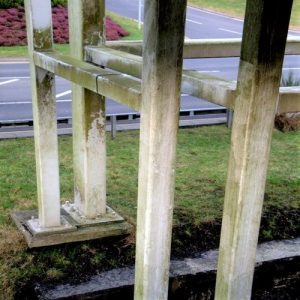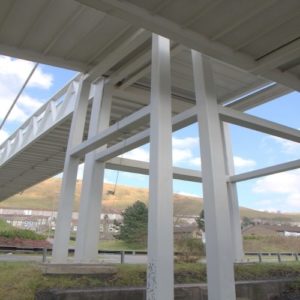Say Goodbye to Unsightly Algae Build-up with Our Professional Algae Remover Service
Algae build-up on concrete, brick, and stone surfaces can be an unsightly and persistent problem. It not only affects the appearance of your property but can also pose a safety hazard by making surfaces slippery. That’s where an algae remover service comes in. At APT, our professional algae remover service, we provide a comprehensive solution to rid your surfaces of algae and moss build-up, leaving them looking clean and new.
In this article, we will explore the benefits of using a professional algae remover service and explain our process for removing algae and moss from concrete, brick, and stone surfaces. Whether you are a homeowner or business owner, our algae remover service can help you maintain a safe and beautiful property.
Algae Remover – The Best Methods to use
When removing algae and moss from any stone edifice, including monuments, listed buildings, graves and tombstones, or any type of concrete or brick facade, you need to make sure that the products and techniques that you use don’t cause further damage to the surface.
Soda Blasting
Soda blasting is an effective method of algae removal that uses sodium bicarbonate (baking soda) as the blast media. The process involves propelling small, uniformly sized particles of baking soda at high velocity to clean and remove algae and other contaminants from various surfaces. Soda blasting is a popular algae remover technique because it is environmentally friendly and does not produce any hazardous waste. The baking soda used in the process is non-toxic and safe for use around plants, animals, and people. Additionally, soda blasting does not damage surfaces, making it an ideal solution for delicate surfaces such as brick, stone, and concrete.
During the soda blasting process, the baking soda particles work to remove algae and moss from the surface by breaking down the organic material. The sodium bicarbonate also absorbs odours and removes stains, leaving the surface clean and refreshed. At APT, our algae remover service, we use soda blasting as one of our preferred methods of algae removal. Our team of trained professionals uses specialized equipment and techniques to ensure a thorough and effective clean. Soda blasting is just one of the many tools we use to ensure that your property is free of algae and other contaminants, leaving it looking clean and new.
Super Heated Steam Cleaning
Super heated steam cleaning is another effective method of algae removal that is commonly used by professional algae remover services. The process involves using high-temperature steam to break down and remove algae and other contaminants from surfaces. Super heated steam cleaning is an eco-friendly and chemical-free method of algae removal that uses only water as the cleaning agent. The steam is heated to temperatures exceeding 300°F, which breaks down the cell walls of the algae, killing it on contact. This method is safe for use on a variety of surfaces, including concrete, brick, and stone, and it is an ideal solution for removing algae from hard-to-reach areas.
During the super heated steam cleaning process, the steam penetrates deep into the pores of the surface, breaking down and removing dirt, grime, and algae build-up. The steam also sanitises and disinfects surfaces, leaving them clean and hygienic. Our algae remover service uses super heated steam cleaning as one of our preferred methods of algae removal. Our trained professionals use specialised equipment and techniques to ensure that surfaces are thoroughly cleaned, sanitized, and free of algae and other contaminants. Super heated steam cleaning is just one of the many tools we use to ensure that your property is left looking clean and new.
Do Not Trust an Algae Remover Service that uses:
Cleaning or preservative products or treatments on important, cultural stonework without discussing the job with a conservation architect first. Ensure you opt for a phosphate and acid free product which is not only environmentally friendly, but that won’t have a negative impact on the building facade. APT’s Algae Free product is an example of the sort of product that is usually endorsed by architects who work on the conservation of listed and historical buildings.
Power washing is used by many cleaning companies to clean off algae and other organic matter from building surfaces. However, power washing can cause major issues, as the water jets tend to remove the sand between the building’s bricks, often lifting them out of place. Care needs to be taken when cleaning these buildings and experienced operatives will know to work at high angles to prevent damage to brickwork. Water, in some cases should not be used in historical conservation.
Minimising The Risk of Algae Growing
To minimise the likelihood of moss and algae attacking your building, there are some specific measures you can take. For example, you should trim back trees whose branches overshadow the building and clear away all organic debris such as leaves or pine needles which collect in gutters and other crevices.
Routine cleaning and maintenance should not be ignored. If you keep the stone, brick or concrete surface of any building clean and treated, then you will minimise the build-up of algae and reduce the need for constant cleaning (which could in turn cause long term deterioration to the surface).
At APT, we offer local authorities and conservation architects specialist advice and guidance in terms of which products should be used to get rid of algae and moss from historic listed buildings and commercial buildings including killing off the spores; as well as which cleaning techniques are the most appropriate to avoid causing any long term damage. For further details, call the APT team on 0800 0723 773.






























